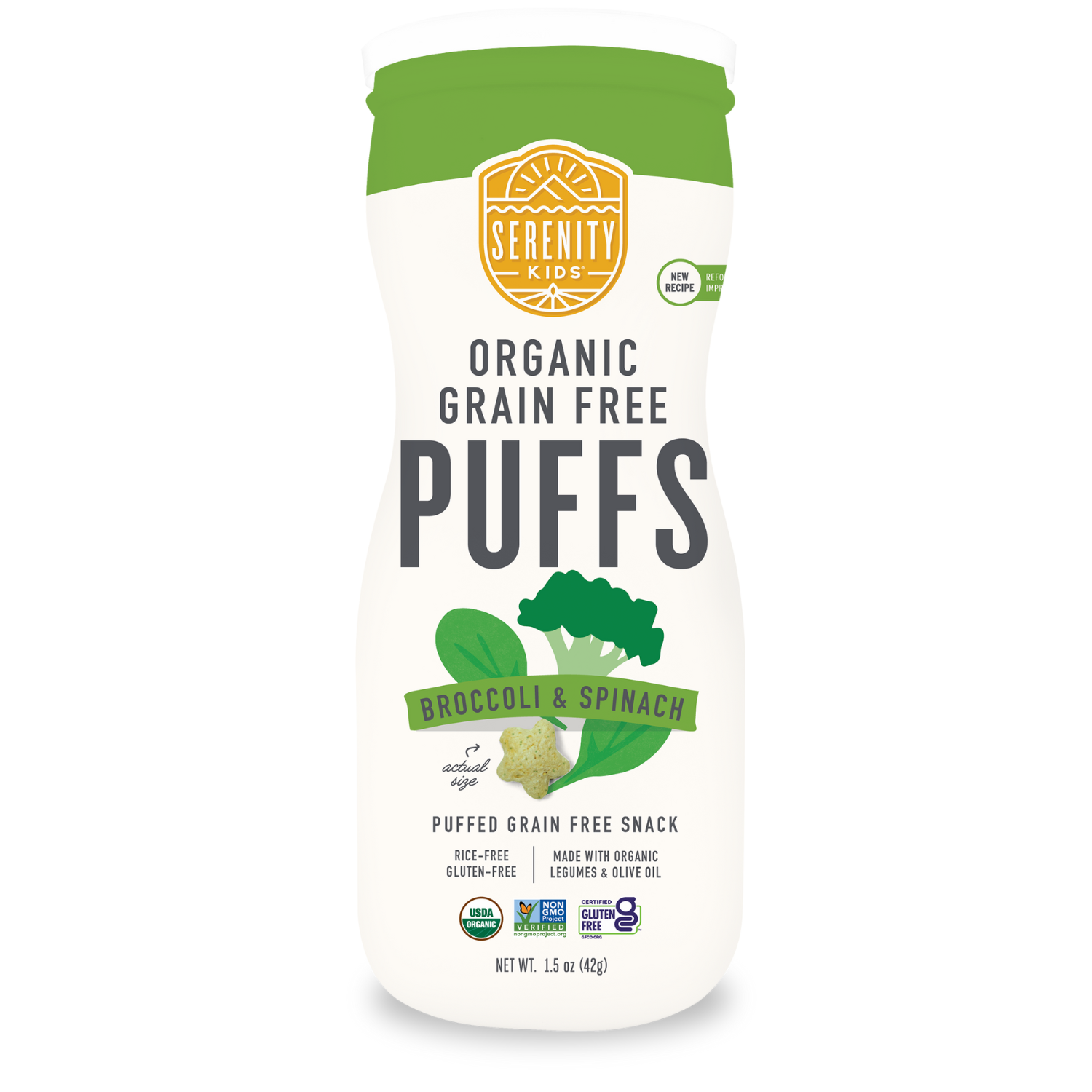At Serenity Kids, we understand teething struggles all too well. Many of us are parents who have been through those sleepless nights and endless crying spells. We know how tough it can be when your happy baby turns into a tiny, grumpy bundle of discomfort seemingly overnight.
Teething can be one of the most challenging phases for both babies and parents. The symptoms can range from mild irritability to full-blown meltdowns, with swollen gums, relentless crying, and the constant need to chew on anything within reach. It's a lot to handle, and it often feels like there's no end in sight.
But here’s the good news: you’re not alone. We’ve been there, and we’re here to help. In this post, we’ll talk about the common symptoms and challenges of teething and share some effective strategies to help soothe your baby and bring a bit of calm back into your home. Let’s tackle this together, with a little support from those who truly understand.

Understanding Teething
What is Teething?
Teething is a natural part of your baby's development, marking the period when their first set of teeth, known as primary teeth or baby teeth, start to emerge through the gums. This process can begin as early as 3 months and continue until your child is about 3 years old. While it's an exciting milestone, it often comes with a fair share of challenges.
Teething Timeline and Variations
Every teething baby is different, and so is their teething timeline. Typically, the bottom front teeth (central incisors) are the first to appear, usually between 4 to 7 months. The top front teeth follow shortly after. By the time your child is around 3 years old, they will likely have a full set of 20 primary teeth. Some babies might start teething earlier or later than average, and that's perfectly normal.
Common Teething Symptoms
Teething can bring a variety of symptoms, and recognizing them can help you better support your little one through this phase:
- Excessive Drooling and Rash: One of the first signs of teething is increased drooling. This can sometimes lead to a mild rash around the mouth, chin, and neck due to constant moisture. Keeping the area dry and using gentle creams can help prevent irritation.
- Changes in Appetite and Sleep: You might notice that your baby's eating and sleeping patterns become more erratic. They may refuse food they usually love or wake up more frequently during the night due to discomfort.
- Fussy Behavior and Irritability: Teething can make babies crankier than usual. The pressure of teeth pushing through the gums can cause significant discomfort, leading to more crying and clinginess.
- Chewing on Objects: To ease the pressure on their gums, teething babies often have an intense urge to chew on anything they can get their hands on. Teething rings, cold washcloths, and safe teething toys can provide some relief.
Teething Myths Debunked
There are many myths surrounding teething, and it's important to separate fact from fiction. One common misconception is that teething causes fever. While it's true that some babies might have a slightly elevated temperature, a high fever is not a typical teething symptom. If your baby has a significant fever, it's best to consult a healthcare professional, as it may indicate an illness unrelated to teething.
Understanding these aspects of teething can help you navigate this challenging time with more confidence and less stress. Remember, teething is a temporary phase, and with a little patience and the right support, you'll both get through it.

Natural Teething Remedies
At Serenity Kids, we believe in the power of natural remedies to help soothe your little one during the teething phase. Here are some tried-and-true methods to bring relief to your baby:
Cold Relief
Cold or frozen foods can help to soothe sore gums and provide some comfort for your baby. If your little one is eating solid foods, try offering cold options to help relieve teething pain. Here are some ideas that might help:
- Ice Cubes: While they can be a bit messy, ice cubes are a simple and effective way to provide cold relief and hydration. Wrap ice cubes and other frozen foods in a dishcloth to make them easier for baby to hold.
- Serenity Kids Pouches Frozen in a Mesh Feeding Strainer or Popsicle Mold: Serenity Kids pouches are not only nutritious but also make for a soothing teething remedy when frozen. Simply freeze the pouches in a mesh feeding strainer or popsicle mold for an easy, nutritious treat that helps alleviate teething pain.
- Chilled Spoon: A chilled spoon, such as a measuring spoon, can offer immediate relief. Simply place it in the refrigerator for a bit before giving it to your baby.
- Frozen Cubes of Chamomile Tea: Chamomile tea is known for its calming properties, and freezing it in an ice cube tray or popsicle mold can provide soothing relief for sore gums.
- Frozen Washcloth: Dampen a clean washcloth, freeze it, and let your baby chew on it. The cold and the texture can be very comforting.
- Popsicles: Popsicles can be made from Serenity Kids baby food, breastmilk, bone broth, diluted electrolyte water (our favorite is LMNT), or plain water. It’s easy to make your own popsicles using a mess-free popsicle mold.
- Breastfeeding: Breastfeeding provides both physical comfort and nutrition, making it one of the best natural remedies for teething. It can be particularly helpful for babies who refuse solid foods due to teething discomfort.
Oral Comfort
- Teething Rings, Gloves, and Chewable Toys: There are many safe and effective teething rings, gloves, and chewable toys available. These teething toys are designed to be soft and soothing, providing comfort while your baby chews on them. This one was Della’s favorite!
- Gentle Gum Massage: Sometimes, the simplest remedies are the best. Gently massaging your baby's gums with a clean finger can help ease the discomfort. Just be sure your hands are clean before you start.
Herbal Remedies
- Chamomile, Licorice Root, Rosehip, and Clove Oil: Herbal remedies like chamomile, licorice root, rosehip, and clove oil can offer soothing relief for teething babies. Chamomile is known for its calming properties (check out one of our favorite Chamomile products here), licorice root can help reduce inflammation, and rosehip is rich in vitamin C and has anti-inflammatory benefits. Clove oil has numbing properties that can help alleviate pain. However, clove oil should be used with caution. Due to its potency, clove oil should be diluted before use. It’s best to mix a very small amount with a carrier oil (like coconut oil) and apply it sparingly to the gums. Or, check out Earthley Teeth Tamer for an easy to use clove oil solution.
Foods with Rough Texture for Teething Babies
While teething can make eating uncomfortable, certain rough-textured foods can actually provide soothing relief by helping to massage sore gums. Here are some options that might help:
- Frozen Waffles: Homemade waffles made with healthy ingredients like eggs, almond flour, and cassava flour can be frozen and offered to your baby. For a convenient store-bought option, try Birch Benders Paleo waffles. The texture of frozen waffles can help soothe sore gums.
- Teething Biscuits: Many parents turn to teething biscuits for babies to gnaw on. Just look for options that don't have too much sugar or are made from rice.
- Beef Jerky: For older babies who are able to chew more effectively, beef jerky made from grass-fed beef with no added sugar can be a satisfying option. Brands like Paleovalley and Chomps offer jerky that is nutritious and helps massage the gums.
By exploring these natural remedies and food options, you can find the best ways to comfort your baby during teething. Remember, every child is different, so it might take some trial and error to discover what works best for your little one. And as always, when in doubt, consult with your healthcare professional to ensure the safety and well-being of your baby.
Over-the-Counter Options
- Teething Gels and Drops: Over-the-counter teething gels and drops can offer relief, but it's important to use them sparingly and according to the instructions. Some products contain benzocaine, which the FDA has warned against for children under 2 years old due to potential risks.
- Effectiveness and Potential Side Effects: While these products can be effective, they also come with potential side effects such as allergic reactions or numbing of the throat, which can be dangerous. Always read labels carefully and use these products under the guidance of a healthcare provider.
Amber Teething Necklaces
Amber teething necklaces are often touted as a natural remedy for teething pain. Made from Baltic amber, they are believed to release succinic acid, which is thought to have anti-inflammatory properties. However, it's important to note that the safety of these necklaces is a topic of debate. They pose a possible choking hazard, so if you choose to use them, always supervise your baby closely and remove the necklace during sleep or any time you're not directly watching your child.
By exploring these natural remedies, you can find the best ways to comfort your baby during teething. Remember, every child is different, so it might take some trial and error to discover what works best for your little one. And as always, when in doubt, consult with your healthcare professional to ensure the safety and well-being of your baby.

When to Consult a Professional
Teething can be a challenging time, but most of the symptoms are manageable and will pass with time. However, there are some signs that might indicate a potential medical issue, and it's important to know when to consult your healthcare professional. Here are some symptoms to watch for:
- High Fever: While a slight increase in temperature can be normal during teething, a high fever is not typically associated with teething. If your baby’s temperature rises above 100.4°F (38°C), it's a good idea to contact your healthcare professional to rule out any underlying infections or illnesses.
- Persistent Diarrhea: A minor change in stool consistency can occur with teething, but persistent or severe diarrhea could be a sign of something more serious. Dehydration can quickly become a concern, so it’s best to seek medical advice if diarrhea continues.
- Refusal to Eat or Drink: It’s normal for teething babies to have fluctuating appetites, but if your baby consistently refuses to eat or drink, it could lead to dehydration and nutritional deficiencies. This is especially important if it lasts more than a day or two, or if your baby isn’t producing wet diapers as they should.
- Excessive Irritability: Some fussiness is expected during teething, but if your baby is inconsolable despite your best efforts to comfort them, it’s worth checking with your healthcare professional. They can help determine if there’s an underlying issue that needs attention.
Remember, as parents, you know your baby best. Trust your instincts. If something feels off or you have concerns about your baby’s health, don’t hesitate to reach out to a healthcare professional. They can provide reassurance, guidance, and support, helping you navigate through this challenging phase with confidence.

Creating a Soothing Environment
Importance of Comfort and Reassurance
Teething can be a tough time for your little one, and providing comfort and reassurance is key. Hold your baby close, offer extra cuddles, and be patient. Sometimes, just being there to soothe them with your presence and voice can make a world of difference.
Sleep Tips for Teething Babies
Sleep disruptions are common during teething, but there are ways to help both you and your teething baby sleep:
- Stick to a Routine: Maintain a consistent bedtime routine to provide a sense of security. A warm bath, gentle rocking, and a calming lullaby can help signal that it’s time to wind down.
- Create a Comfortable Sleep Environment: Ensure the room is cool, dark, and quiet. Consider using a white noise machine to mask any background noise that might disturb your baby.
- Offer Extra Comfort: If your baby wakes up in discomfort, a gentle back rub or rocking can help soothe them and help them fall asleep. A chilled teething toy before bedtime might also help ease their gums.
Creating a Calm and Nurturing Atmosphere
A calm and nurturing environment can significantly reduce your baby’s discomfort:
- Keep the Lights Dim: Bright lights can be overstimulating. Soft, dim lighting creates a more relaxing atmosphere.
- Play Soft Music: Gentle lullabies or calming nature sounds can help soothe your baby’s nerves.
- Use Aromatherapy: A few drops of lavender or peppermint essential oil in a diffuser can promote relaxation. Always ensure the oils are safe for babies and used in moderation.
Managing Teething Rash
Teething often leads to excessive drooling, which can cause a rash around your baby’s mouth, chin, and neck. Here’s how to manage and treat teething rash:
- Keep the Area Dry: Gently wipe away drool with a soft cloth throughout the day to keep your baby’s skin dry. Avoid rubbing, as this can irritate the skin further.
- Apply a Barrier Cream: Use a gentle, baby-safe barrier cream or ointment to protect the skin.
- Use Soft Fabrics: Dress your baby in soft, breathable fabrics and consider using bibs made of absorbent material to catch drool. Change bibs and clothing as needed to keep the area dry.
- Give Skin a Break: During nap times, try to let the skin air out without any creams or ointments to allow it to breathe and heal naturally.

Additional Tips for Teething Parents
The Role of Nutrition in Supporting Teething
Proper nutrition is vital during teething to support your baby’s overall health:
- Offer Nutritious Foods: Many nutrient-rich foods can help soothe the gums while providing essential vitamins and minerals. Try different temperatures and textures to see what your baby tolerates.
- Stay Hydrated: Ensure your baby is drinking enough fluids. Hydration is crucial, especially if they have a slight fever or are drooling more than usual.
Tips for Managing a Teething Toddler's Mood
Teething can lead to crankiness and mood swings. Here’s how to help your toddler cope:
- Distraction is Key: Engage your toddler in fun activities to distract them from the discomfort. Simple games, storytime, a bath, or a walk outside can work wonders.
- Maintain a Routine: Consistency in daily routines provides a sense of stability and can help manage mood swings.
- Offer Choices: Giving your toddler some control can reduce frustration. Let them choose between two acceptable options, like which book to read or which snack to have.
Balancing Work and Childcare Responsibilities During Teething
Balancing work and a teething baby can be challenging, but with some planning, it’s manageable:
- Plan Ahead: Try to anticipate your baby’s needs and adjust your work schedule accordingly. Flexibility is crucial during this period.
- Ask for Help: Don’t hesitate to lean on family members, friends, or a trusted babysitter to give you some relief.
- Take Breaks: If you work from home, schedule short breaks to check in on your baby and offer comfort. This can help you manage stress and stay productive.
Teething is a tough phase, but it’s temporary. By creating a soothing environment and taking care of yourself and your baby, you’ll both get through it. Remember, it’s okay to seek support and take things one day at a time.

Conclusion
Teething can be a challenging time for both babies and parents, but with the right approach, you can ease some of the baby teething pain and make this stage a little bit smoother. To recap, we’ve explored various natural remedies, including cold relief options like frozen foods and Serenity Kids pouches, soothing oral comfort techniques, herbal remedies, and safe over-the-counter solutions. We also touched on the importance of choosing appropriate foods with rough textures and highlighted various ways to create a comforting environment for your baby.
Remember, each baby is unique, and what works for one may not work for another. It’s a journey of trial and error to find what best soothes your little one’s teething pains. Be patient with yourself and your baby during this time, and don't hesitate to reach out to your healthcare professional if you have concerns or need additional guidance.















































